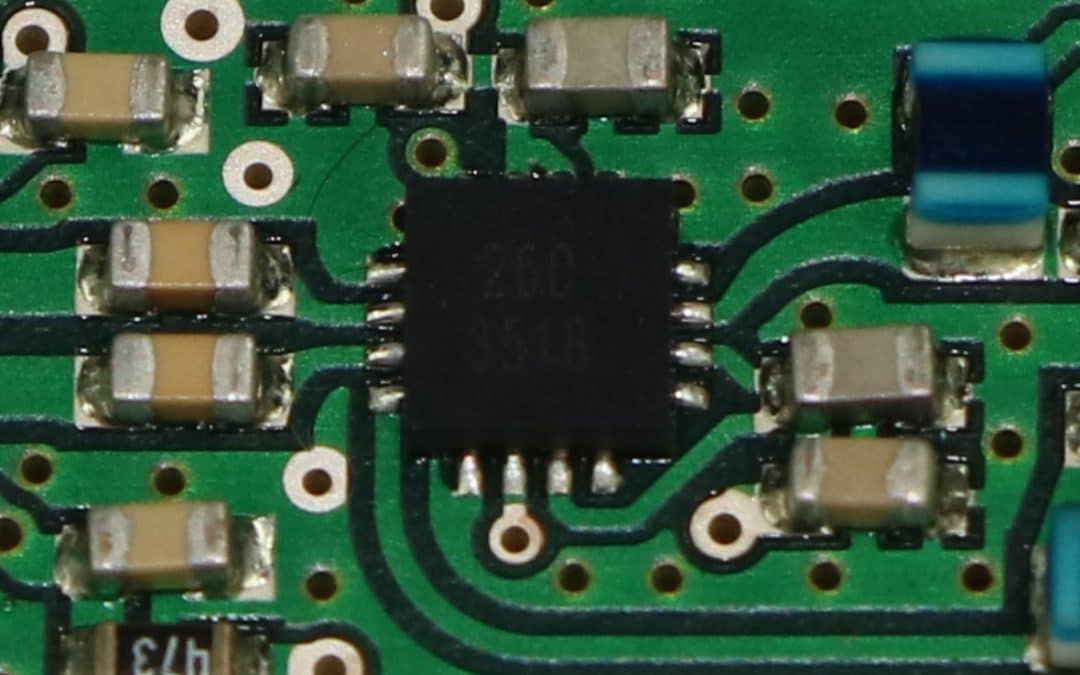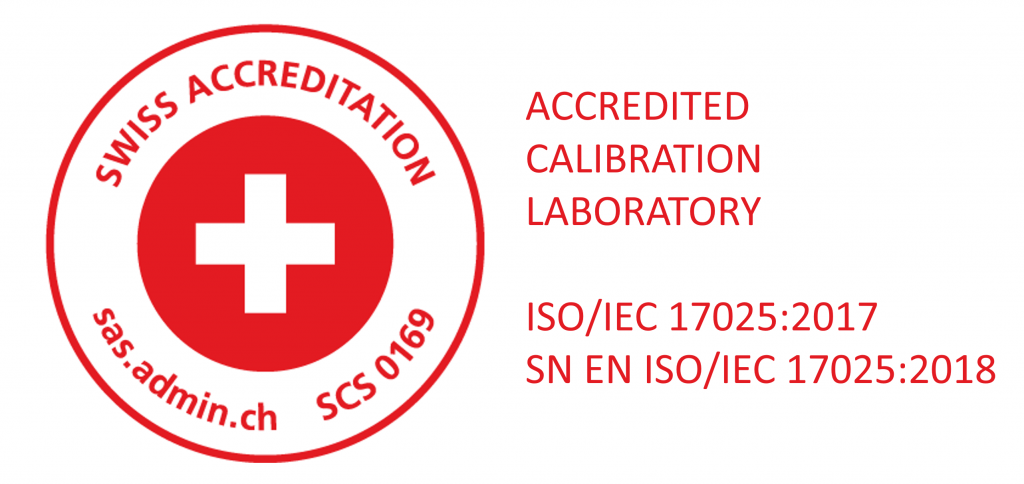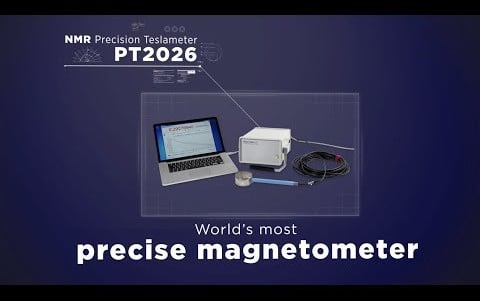Research and Development
At Metrolab, we invest approximately 18% of our turnover and 41% of our labor hours in R&D. For all our magnetometers, we avoid ferromagnetic material in components close to the sensor. This way, we avoid any distortion that could impact the final measurement precisionPrecision is how closely multiple measurements will be clustered. Also called reproducibility or repeatability. In everyday speech, often confused with... More. Sometimes suitable parts are not commercially available and require custom development.
Collaboration
In collaboration with the team of Giovanni Boero at the EPFL in Lausanne, Switzerland, we have developed a broad-band single-chip integrated transceiver designed explicitly for Nuclear Magnetic Resonance Magnetometry. This chip is at the heart of the newly released Model 1526 NMR remote head probe.

Figure 1: Model 1526 ProbeThe actual sensor that is placed in the magnetic field. The NMR probe contains the NMR sample; the Hall probe... More.
Designed for the PT2026 NMR Precision Teslameter, the Model 1526 probes provide unprecedented precisionPrecision is how closely multiple measurements will be clustered. Also called reproducibility or repeatability. In everyday speech, often confused with... More using the Pulsed-Wave detection principle. This probeThe actual sensor that is placed in the magnetic field. The NMR probe contains the NMR sample; the Hall probe... More, presented in figure 1, is composed of the primary probeThe actual sensor that is placed in the magnetic field. The NMR probe contains the NMR sample; the Hall probe... More electronics and the remote measurement head designed to fit into small gaps [Figure 2].

Figure 2: Model 1526, picture of a printed circuit board of the remote head.
The single-chip transceiver is realized using a standardA standard is the internationally agreed-upon physical representation of a unit. For example, a caesium clock is the standard for... More silicon complementary metal-oxide-semiconductor (CMOS) integrated-circuit technology. A radiofrequency (RF) transmit amplifier, a send/receive switch, a low noise RF receive amplifier, a quadrature mixer, and a low-noise amplifier are integrated on a chip of 1.8 mm2. These active components in the remote measurement head allow the down-conversion, pre-amplification, and impedance adaptation of the NMRNuclear Magnetic Resonance. A resonance phenomenon seen when you irradiate a sample in a magnetic field with an RF field.... More signal before transferring it to the primary probeThe actual sensor that is placed in the magnetic field. The NMR probe contains the NMR sample; the Hall probe... More electronics. In the case of the Model 1426 remote head probeThe actual sensor that is placed in the magnetic field. The NMR probe contains the NMR sample; the Hall probe... More, all NMRNuclear Magnetic Resonance. A resonance phenomenon seen when you irradiate a sample in a magnetic field with an RF field.... More signal conditioning occurs after transfer to the primary probeThe actual sensor that is placed in the magnetic field. The NMR probe contains the NMR sample; the Hall probe... More electronics. NMRNuclear Magnetic Resonance. A resonance phenomenon seen when you irradiate a sample in a magnetic field with an RF field.... More signal conditioning in the remote head of the Model 1526 probeThe actual sensor that is placed in the magnetic field. The NMR probe contains the NMR sample; the Hall probe... More, at the point of acquisition, dramatically improves the signal-to-noise ratio compared to the Model 1426 probes. It enables the lossless signal transport over greater distances, up to 10 m, to the primary probeThe actual sensor that is placed in the magnetic field. The NMR probe contains the NMR sample; the Hall probe... More electronics.
On the other hand, the remote head of the Model 1426 probe contains a limited number of varactors as unique electronic components [Figure 3]. This is especially useful when measuring magnetic fields in high-radiation environments. All other active components are safely located away from the radiation source inside the primary probeThe actual sensor that is placed in the magnetic field. The NMR probe contains the NMR sample; the Hall probe... More electronics. The smaller size also allows NMRNuclear Magnetic Resonance. A resonance phenomenon seen when you irradiate a sample in a magnetic field with an RF field.... More measurements in smaller gaps.

Figure 3: Model 1426, 3D drawing of a printed circuit board of the remote head.
This work carried in the framework of the Commission for Technology and Innovation (CTI/KTI, Switzerland, Grant Nos. 14057.1 and 18505.1) has been published in Review of Scientific Instruments in January 2019 [1]. We released the Model 1526 NMR probe to production in November 2019.
1: Grisi, Marco & Conley, Gaurasundar Marc & Sommer, Pascal & Tinembart, Jacques & Boero, Giovanni. (2019). A single-chip integrated transceiver for high field NMR magnetometry. Review of Scientific Instruments. 90. 015001. 10.1063/1.5066436.






